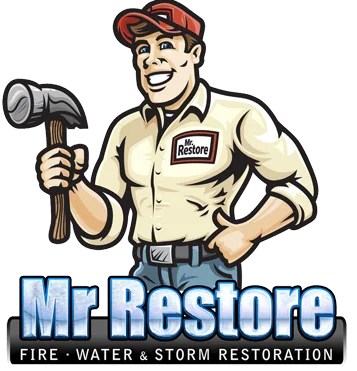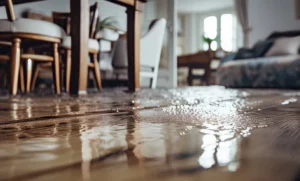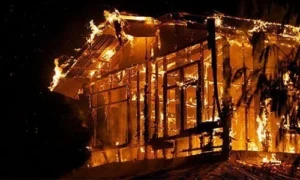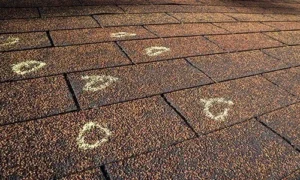When you’re dealing with water damage, you absolutely cannot delay starting the restoration process. The process for water damage restoration in Fort Worth, TX, is usually so extensive that it is always advised that you get it done by professionals. Many homeowners feel like they can handle it on their own, but there can be some unforeseen circumstances. The main aim is always to get all the water out. Once the water is absorbed, it can seep down to the sub-level and be very difficult to remove. Apart from the difficulty, most homeowners are not aware of the process for water damage restoration in Fort Worth, TX. If you’re facing water damage and are unsure about what the restoration process with the professionals entails, take a closer look at it here.
Inspection and Classification
The first step for restoration relies on the inspection and proper classification of the kind of water damage. Based on the source, the type, and the extent of the water damage, it can fall into different categories and classes. This makes a marked difference in the overall restoration methods applied. Additionally, this step is important when you want to file a home insurance claim or a rental claim. The inspection phase can be the perfect time to take pictures and collect necessary evidence related to the process of water damage restoration in Fort Worth, TX. All of this proof can strengthen your insurance claim and help it to get processed faster.
Water and Moisture Removal
Removal of water and moisture is a must. This relates to standing water or water that is pouring in from a source. In such cases, you need to turn off the main switch for the water line. Professionals will also make use of a water vacuum in order to remove standing water in a contained area. This is also a good time to identify the source of the water. If the water is seeping in from the roof, water damage restoration in Fort Worth, TX, will include a close inspection of the roof. The source of the water could also either be a clogged gutter, a leaking water tank, or something else. Once all the visible water is removed, evaporation will be taken into consideration. Dehumidifiers will be used to get rid of moisture in the air. This is a crucial step that will also help to avoid getting mold growth in your home.
Containment of Areas
Once a proper inspection is finished, the next process of water damage restoration in Fort Worth, TX is containment. After all the visible water has been removed, the professionals will start to close off areas with water damage. This is done with the aim of drying them properly. To do so, they will bring in fans, dehumidifiers, and special mats or rugs to draw out water from the floors or the walls. The fans will also be used to increase airflow and ventilation. Containment is necessary to create an environment that will allow the room to dry. Heat is never applied because not only does it make the water evaporate and increase moisture levels, it can boost the growth of mold. Mold likes to grow in warm, humid environments.
Proper Drying of the Area
For proper water damage restoration in Fort Worth, TX, a lot of effort will be focused on the drying process. This can mean that your home will be filled with fans, dehumidifiers, and machines of other types that remove moisture. Carpets and furniture might have to be rearranged, floor mats will be spread out, and in some cases, there might be a bit of drilling. Sometimes, instead of removing a whole portion of the wall, professionals will make strategic holes in the walls. This is done to maximize the reach of the fans. The aim is to dry the sub-level as quickly as possible. For flooring, some wooden floorboards might be removed to get to the moisture underneath. Until the sub-level is dry, the upper level will not completely dry. While you might not like the idea of getting holes in your wall or missing planks on the floor, the alternative is to completely demolish the area and rebuild. That is both costly and impossible.
Monitoring for Unseen Damage
Before removing all the fans, the professionals will make one last monitoring sweep of the home. This is done to ensure that there are no signs of water damage that were overlooked. Doing so requires the use of various moisture level readers and other equipment. It’s a good idea to opt for professional water damage restoration in Fort Worth, TX since they have this equipment readily available. Once they finish the monitoring process and they get the all-clear, they will start to remove all the fans and dehumidifiers. If the reading doesn’t come back positive, they will have to concentrate the fans on the area where moisture was still detected. This can be a long process, but it shows that the professionals are working with you to remove all the presence of water.
Cleanup after Drying
Water damage restoration in Fort Worth, TX, doesn’t always extend to just the drying and removal of water. There can be other damage to deal with, such as water stains on the wallpaper, mud on the floorboards, and even toxic residue left from sewage water. For this reason, you will have to get a professional clean-up of your home. Your furniture, carpets, tables, and other home accessories that were impacted by the flooding will also have to be cleaned up professionally. Luckily, these are small things; if needed, they can be completely replaced instead of cleaned.
Work with Mr. Restore
As highlighted above, the process of water damage restoration can be a long one. It’s a good idea to get the professionals on board. If you are searching for the right services for water damage restoration in Fort Worth, TX, get in touch with Mr. Restore. Their team is skilled in water damage restoration and will have your place clean, dry, and looking as good as new in next to no time. For more information or to make a booking, call 1-877-631-7576 today!






